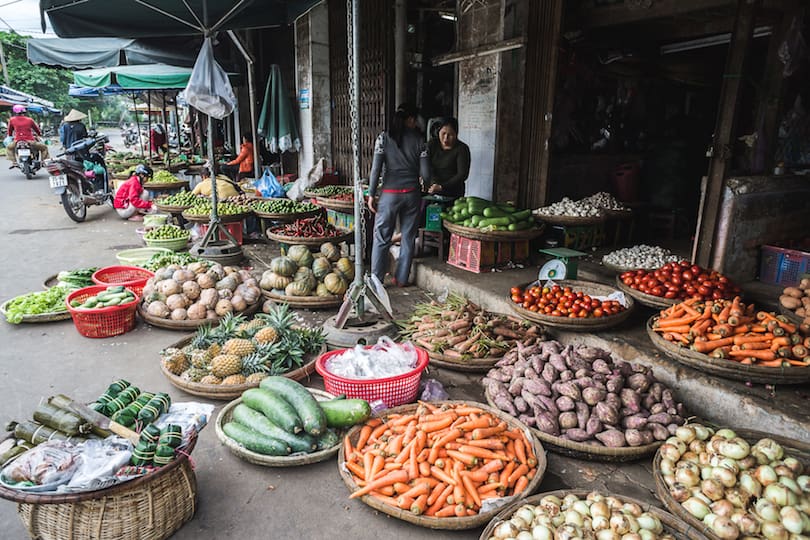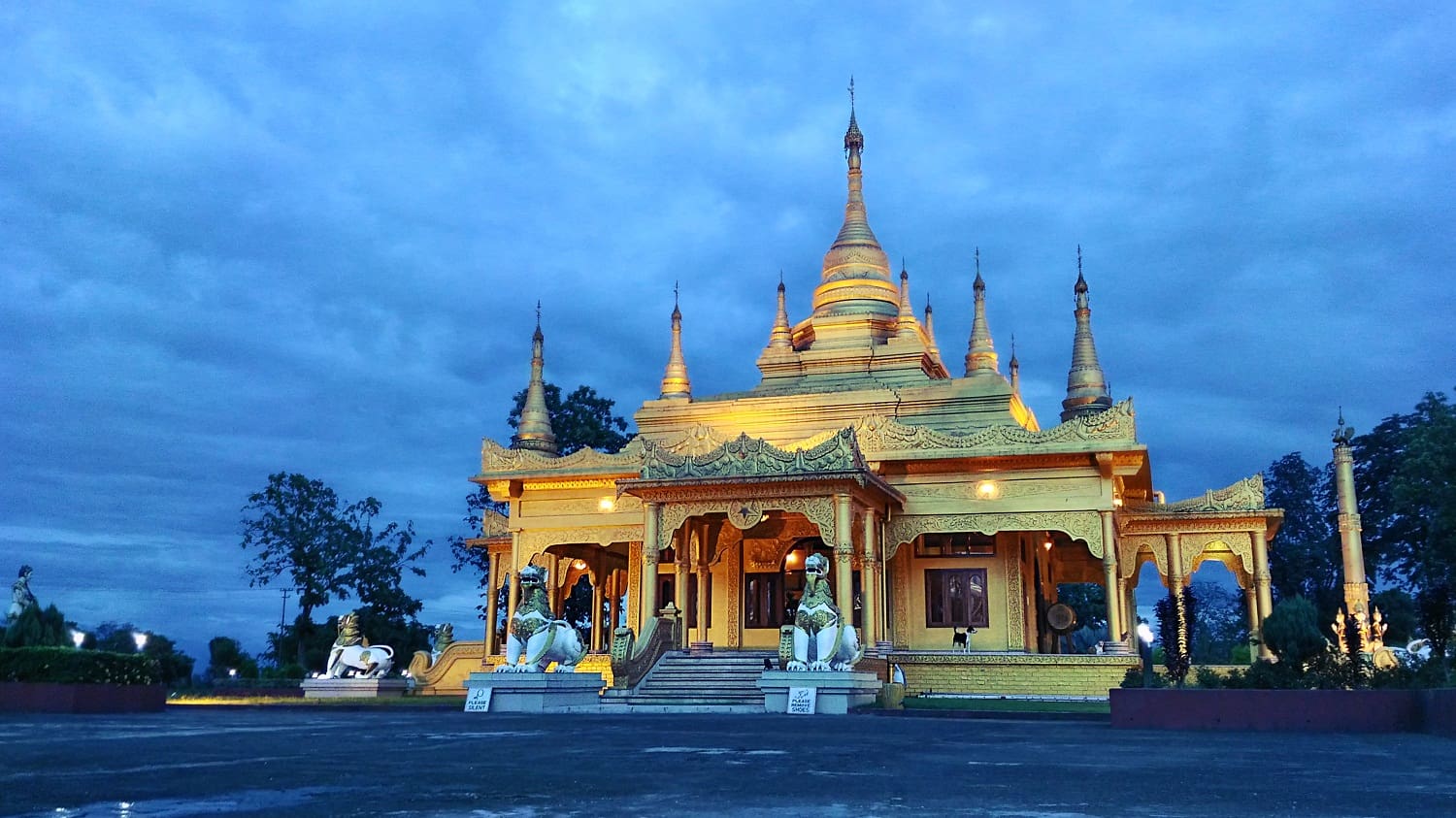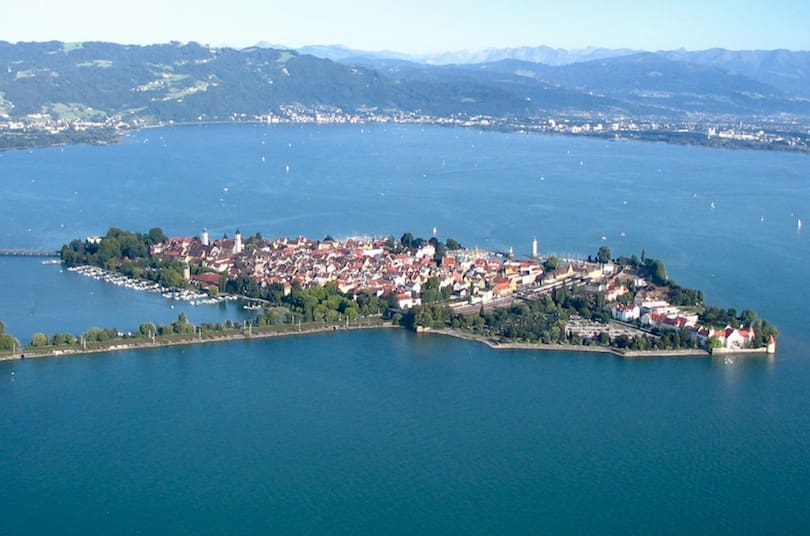Cherrapunji, often referred to as the “Wettest Place on Earth,” is a breathtaking hill station nestled in the northeastern state of Meghalaya, India. Known for its lush green landscapes, cascading waterfalls, and unique living root bridges, this destination offers an unparalleled experience for travelers seeking tranquility and adventure. Whether you’re a nature enthusiast, a photographer, or simply someone looking to escape the hustle and bustle of city life, Cherrapunji (Cherrapunji Hill Station) has something extraordinary to offer.
In this comprehensive guide, we will delve into every aspect of planning your trip to Cherrapunji. From understanding the best time to visit, exploring the must-see attractions, indulging in local cuisine, to learning about the rich cultural heritage of the Khasi tribe, we’ve got you covered. Our goal is to ensure that your journey to Cherrapunji is not only memorable but also seamless.
Why Visit Cherrapunji? – Cherrapunji Hill Station
Cherrapunji stands out as one of the most enchanting destinations in India. Its natural beauty, coupled with its unique ecological features, makes it a haven for travelers. Here are some compelling reasons why Cherrapunji should be on your travel bucket list:
1. Natural Wonders
Cherrapunji is home to some of the most stunning natural wonders in the world. The region boasts pristine waterfalls, deep valleys, and dense forests that create a surreal atmosphere. The famous Nohkalikai Falls , one of the tallest waterfalls in India, is a sight to behold. Similarly, the Seven Sisters Falls and Krem Mawmluh Cave add to the allure of this picturesque destination.
Nohkalikai Falls: A Majestic Sight
Standing tall at 1,115 feet, Nohkalikai Falls is one of the highest waterfalls in India. Surrounded by dense forests and cliffs, the waterfall plunges dramatically into a turquoise pool below. Legend has it that the falls were named after a heartbroken woman who jumped off the cliff. Visitors can enjoy panoramic views of the falls from designated viewpoints, especially during the monsoon season when the water flow is at its peak.
Seven Sisters Falls: Nature’s Symphony
Also known as Nohsngithiang Falls , this majestic waterfall comprises seven distinct streams flowing side by side. Best viewed from a distance, especially during sunset, the Seven Sisters Falls creates a mesmerizing spectacle. The cascading waters reflect sunlight, creating rainbows that dance across the horizon—a truly magical sight.
Krem Mawmluh Cave: An Underground Marvel
Among the longest caves in India, Krem Mawmluh Cave is renowned for its intricate limestone formations and underground pools. Guided tours are available for visitors interested in exploring its mysterious interiors. Inside, you’ll find stalactites and stalagmites formed over millions of years, each telling a story of geological history.
2. Living Root Bridges
One of the most fascinating aspects of Cherrapunji is its living root bridges. These bio-engineered marvels are created by weaving the roots of rubber trees over streams and rivers. Over decades, these roots grow stronger, forming sturdy bridges that can withstand heavy rainfall. The Double Decker Living Root Bridge in nearby Nongriat village is a must-visit attraction.
Double Decker Living Root Bridge: A Testament to Human Ingenuity
Located in the village of Nongriat, the Double Decker Living Root Bridge is an engineering marvel crafted entirely from tree roots. Reaching the bridge involves a challenging trek, but the effort is worth it once you witness this architectural wonder up close. The bridge spans a crystal-clear stream, offering a serene setting for relaxation and photography. It’s a symbol of sustainable architecture and human ingenuity, showcasing how communities adapt to their environment.
3. Rich Cultural Heritage
The Khasi tribe, indigenous to the region, has a vibrant culture steeped in tradition. Their unique customs, festivals, and hospitality make visiting Cherrapunji a culturally enriching experience. Don’t miss the chance to explore local markets and interact with the friendly locals.
Khasi Tribe: Guardians of Tradition
The Khasi people are known for their matrilineal society, where lineage and inheritance pass through the female line. This unique social structure sets them apart from other tribes in India. During your visit, take time to learn about their traditional music, dance forms like the Ka Shad Suk Mynsiem , and rituals performed during festivals such as Behdeinkhlam and Nongkrem Dance Festival .
4. Adventure Activities
For thrill-seekers, Cherrapunji offers a range of adventure activities such as trekking, caving, and rappelling. Exploring the caves of Cherrapunji or hiking through its verdant trails provides an adrenaline rush while allowing you to connect with nature.
Trekking Trails: Explore the Wilderness
Cherrapunji offers numerous trekking opportunities, ranging from easy walks to challenging hikes. Popular treks include the route to the Double Decker Living Root Bridge, which takes you through lush forests and quaint villages. Another favorite is the trek to Mawsmai Cave , where you’ll navigate narrow passages illuminated by natural light filtering through crevices.
Caving Adventures: Unveil Hidden Mysteries
For those intrigued by subterranean worlds, caving in Cherrapunji is an exhilarating experience. Beyond Krem Mawmluh, there are several other caves worth exploring, such as Arwah Cave and Siju Cave . Each cave presents a different set of challenges and rewards, from tight squeezes to expansive chambers adorned with ancient rock formations.
Best Time to Visit Cherrapunji
Choosing the right time to visit Cherrapunji is crucial for making the most of your trip. While the hill station is beautiful year-round, certain seasons offer better weather conditions and accessibility.
Monsoon Season (June to September)
Cherrapunji receives an astonishing amount of rainfall during the monsoon season, earning its title as the wettest place on Earth. If you’re fascinated by rain-soaked landscapes and roaring waterfalls at their peak flow, this is the ideal time to visit. However, be prepared for slippery roads and limited outdoor activities due to heavy rains.
Experiencing Monsoon Magic
During the monsoon, Cherrapunji transforms into a verdant paradise. Waterfalls swell to their full glory, and the air is filled with the refreshing scent of petrichor. While the rain may restrict mobility, it enhances the ethereal beauty of the surroundings. Ensure you carry waterproof gear and plan indoor activities like visiting museums or indulging in local cuisine.
Post-Monsoon Season (October to November)
This period marks the transition from monsoon to winter. The weather becomes pleasant, and the lush greenery remains intact. It’s a great time for sightseeing, photography, and trekking without the hindrance of incessant rain.
Golden Hour Photography
Post-monsoon is perfect for capturing the golden hues of sunrise and sunset against the backdrop of misty hills and glistening waterfalls. Photographers will find endless inspiration in the dramatic landscapes and vibrant flora.
Winter Season (December to February)
Winter brings cool temperatures and clear skies, making it perfect for exploring the outdoors. This is also the busiest tourist season, so expect higher footfall at popular attractions.
Festive Vibes and Festivals
Winter coincides with several festivals celebrated by the Khasi tribe, adding a festive vibe to your visit. Join in the celebrations, sample traditional delicacies, and immerse yourself in the joyous spirit of the community.
Pre-Monsoon Season (March to May)
During these months, the weather is warm and dry, offering excellent opportunities for adventure activities like caving and hiking. The waterfalls may not be at their fullest, but the overall experience is still rewarding.
Spring Blossoms and Birdwatching
As spring arrives, the hills come alive with blossoming flowers and chirping birds. Birdwatchers will delight in spotting rare species endemic to the region, such as the Himalayan Monal and Fire-tailed Myzornis .
How to Reach Cherrapunji
Reaching Cherrapunji requires careful planning, as it is located in a remote part of northeastern India. Below are the various modes of transportation available:
By Air
The nearest airport is Umroi Airport , approximately 30 kilometers from Shillong, the capital of Meghalaya. From there, you can hire a taxi or take a bus to reach Cherrapunji. Alternatively, Guwahati International Airport, located around 150 kilometers away, serves as another option.
Flying into Umroi Airport
Umroi Airport connects major cities like Kolkata and Delhi via direct flights. Upon arrival, pre-booked taxis or shared cabs are readily available to transport you to Cherrapunji. The scenic drive takes about two hours, offering glimpses of rolling hills and verdant valleys.
By Train
There are no direct train services to Cherrapunji. The closest railway station is Guwahati Railway Station , which connects major cities across India. From Guwahati, you can book a cab or board a shared taxi to reach your destination.
Rail Journey to Guwahati
Traveling by train allows you to soak in the diverse landscapes of Assam and Meghalaya. Once in Guwahati, private taxis and government buses operate frequent services to Cherrapunji, ensuring smooth connectivity.
By Road
Road connectivity to Cherrapunji is well-developed, with regular bus services operating from Shillong and Guwahati. Private taxis and self-driven cars are also convenient options for reaching Cherrapunji. The scenic drive through winding roads surrounded by lush greenery adds to the charm of the journey.
Self-Drive Adventure
Renting a car gives you the flexibility to explore at your own pace. The road to Cherrapunji winds through picturesque villages and tea estates, providing ample opportunities for impromptu stops and photo sessions.
Top Attractions in Cherrapunji
Cherrapunji is brimming with attractions that cater to diverse interests. Let’s explore the top places you shouldn’t miss during your visit:
1. Nohkalikai Falls
Standing tall at 1,115 feet, Nohkalikai Falls is one of the highest waterfalls in India. Surrounded by dense forests and cliffs, the waterfall plunges dramatically into a turquoise pool below. Legend has it that the falls were named after a heartbroken woman who jumped off the cliff.
Exploring Nohkalikai Falls
Visitors can access multiple viewpoints offering varying perspectives of the falls. Early morning visits provide the clearest visibility, while evenings bring a mystical aura as mist envelops the area. Nearby stalls sell snacks and souvenirs, making it convenient for extended stays.
2. Seven Sisters Falls
Also known as Nohsngithiang Falls , this majestic waterfall comprises seven distinct streams flowing side by side. Best viewed from a distance, especially during sunset, the Seven Sisters Falls creates a mesmerizing spectacle.
Capturing the Seven Sisters
Photographers flock to specific vantage points to capture the falls bathed in golden light. Bring a tripod for long-exposure shots that highlight the movement of water. Local guides can help identify lesser-known spots for unique compositions.
3. Double Decker Living Root Bridge
Located in the village of Nongriat, the Double Decker Living Root Bridge is an engineering marvel crafted entirely from tree roots. Reaching the bridge involves a challenging trek, but the effort is worth it once you witness this architectural wonder up close.
Trek to Nongriat Village
The trek begins at Tyrna village, descending steep steps carved into the hillside. Along the way, you’ll encounter smaller root bridges, terraced fields, and friendly villagers eager to share stories. Upon reaching Nongriat, relax by the stream and marvel at the double-decker bridge spanning it gracefully.
4. Krem Mawmluh Cave
Among the longest caves in India, Krem Mawmluh Cave is renowned for its intricate limestone formations and underground pools. Guided tours are available for visitors interested in exploring its mysterious interiors.
Inside Krem Mawmluh
Guides equipped with torches lead groups through dimly lit passages, pointing out peculiar shapes formed by dripping water over millennia. Keep an eye out for tiny creatures like bats and insects adapted to life in perpetual darkness.
5. Mawsmai Cave
Unlike Krem Mawmluh, Mawsmai Cave is more accessible and beginner-friendly. Illuminated pathways allow tourists to navigate through its narrow passages and admire stalactites and stalagmites.
Family-Friendly Exploration
Ideal for families with children, Mawsmai Cave offers a safe yet thrilling introduction to spelunking. Information boards explain the formation process of stalactites and stalagmites, enhancing educational value.
6. Eco Park
Situated near the Bangladesh border, Eco Park offers panoramic views of the surrounding plains and hills. It’s an excellent spot for picnics, leisurely walks, and enjoying the serene ambiance.
Activities at Eco Park
Besides admiring the landscape, visitors can engage in recreational activities like zip-lining, boating, and cycling. Food stalls serve local snacks, and picnic areas provide shaded seating under towering trees.
Local Cuisine of Cherrapunji
No trip to Cherrapunji is complete without savoring its delectable local cuisine. The Khasi tribe’s traditional dishes are simple yet flavorful, using locally sourced ingredients.
Jadoh
A staple dish made from rice and meat (usually pork), Jadoh is cooked with aromatic spices and herbs. It’s often served with tangy chutneys made from fermented bamboo shoots.
Preparing Jadoh
Jadoh is typically prepared during special occasions and gatherings. Marinated meat simmers slowly with rice until tender, absorbing flavors from ginger, garlic, and bay leaves. Accompany it with pickled vegetables or fresh salad for a balanced meal.
Dohneiiong
This spicy pork curry is slow-cooked with black sesame seeds, giving it a rich and nutty flavor. Paired with steamed rice, it’s a comforting meal after a day of exploration.
Cooking Dohneiiong
Black sesame paste lends a distinctive taste to Dohneiiong. Pork pieces simmer gently in a blend of onions, tomatoes, and spices until succulent. Garnish with coriander leaves before serving hot.
Tungrymbai
A savory dish prepared with fermented soybeans, Tungrymbai is packed with umami flavors. It’s typically enjoyed with rice or roti.
Making Tungrymbai
Fermented soybeans mash easily, releasing intense aromas. Mixed with chopped onions, green chilies, and mustard oil, Tungrymbai develops a robust profile. Adjust seasoning according to preference; some prefer it milder, others spicier.
Pumaloi
Made from powdered rice steamed in bamboo tubes, Pumaloi is a traditional snack that pairs well with tea or coffee.
Crafting Pumaloi
Rice powder fills hollow bamboo sections, secured tightly before steaming. Once cooked, unwrap carefully to reveal soft, fragrant cylinders. Slice thinly and serve alongside beverages for a delightful treat.
Travel Tips for Visiting Cherrapunji
To ensure a smooth and enjoyable trip, here are some essential tips to keep in mind:
- Pack Appropriately: Carry waterproof gear, sturdy shoes, and warm clothing, especially if visiting during the monsoon or winter.
- Stay Hydrated: Drink bottled water and carry snacks during long treks.
- Respect Local Customs: Dress modestly and seek permission before taking photographs of locals.
- Book Accommodations Early: Popular homestays and resorts fill up quickly, especially during peak seasons.
- Hire a Local Guide: For cave explorations and trekking, hiring a knowledgeable guide enhances safety and enriches your experience.
Other Tourist Attractions Near Cherrapunji
While Cherrapunji itself is a treasure trove of attractions, there are several nearby destinations worth exploring:
- Shillong: Known as the “Scotland of the East,” Shillong is just a short drive away and offers attractions like Ward’s Lake, Shillong Peak, and Don Bosco Museum.
- Mawlynnong Village: Dubbed Asia’s cleanest village, Mawlynnong is famous for its cleanliness initiatives and stunning viewpoints.
- Dawki River: Located near the Indo-Bangladesh border, Dawki River is renowned for its crystal-clear waters and boating opportunities.
Conclusion
Cherrapunji is a paradise waiting to be explored. With its awe-inspiring landscapes, rich cultural heritage, and thrilling adventures, it promises an unforgettable experience for every traveler. By following this comprehensive guide, you’ll be well-equipped to plan a memorable trip to this enchanting hill station. So pack your bags, embrace the spirit of adventure, and get ready to immerse yourself in the magic of Cherrapunji!
Frequently Asked Questions (FAQs) – Cherrapunji Hill Station
- What is Cherrapunji famous for?
- Cherrapunji is famous for being the wettest place on Earth, its stunning waterfalls, living root bridges, and lush greenery.
- When is the best time to visit Cherrapunji?
- The best time to visit is between October and March when the weather is pleasant and conducive for sightseeing.
- How do I reach Cherrapunji?
- You can reach Cherrapunji via Umroi Airport, Guwahati Railway Station, or by road from Shillong or Guwahati.
- Are there any adventure activities in Cherrapunji?
- Yes, activities like trekking, caving, and rappelling are popular among adventure enthusiasts.
- What is the significance of living root bridges?
- Living root bridges are sustainable structures created by weaving tree roots, symbolizing harmony between humans and nature.
- Which waterfalls should I visit in Cherrapunji?
- Must-visit waterfalls include Nohkalikai Falls, Seven Sisters Falls, and Wei Sawdong Falls.
- Is Cherrapunji safe for solo travelers?
- Yes, Cherrapunji is generally safe for solo travelers, provided basic precautions are taken.
- What is the local language spoken in Cherrapunji?
- The primary language is Khasi, though English and Hindi are widely understood.
- Can I visit Cherrapunji during the monsoon?
- Yes, but expect heavy rainfall and limited mobility due to slippery roads.
- What are some must-try dishes in Cherrapunji?
- Try Jadoh, Dohneiiong, Tungrymbai, and Pumaloi for an authentic taste of Khasi cuisine.
















